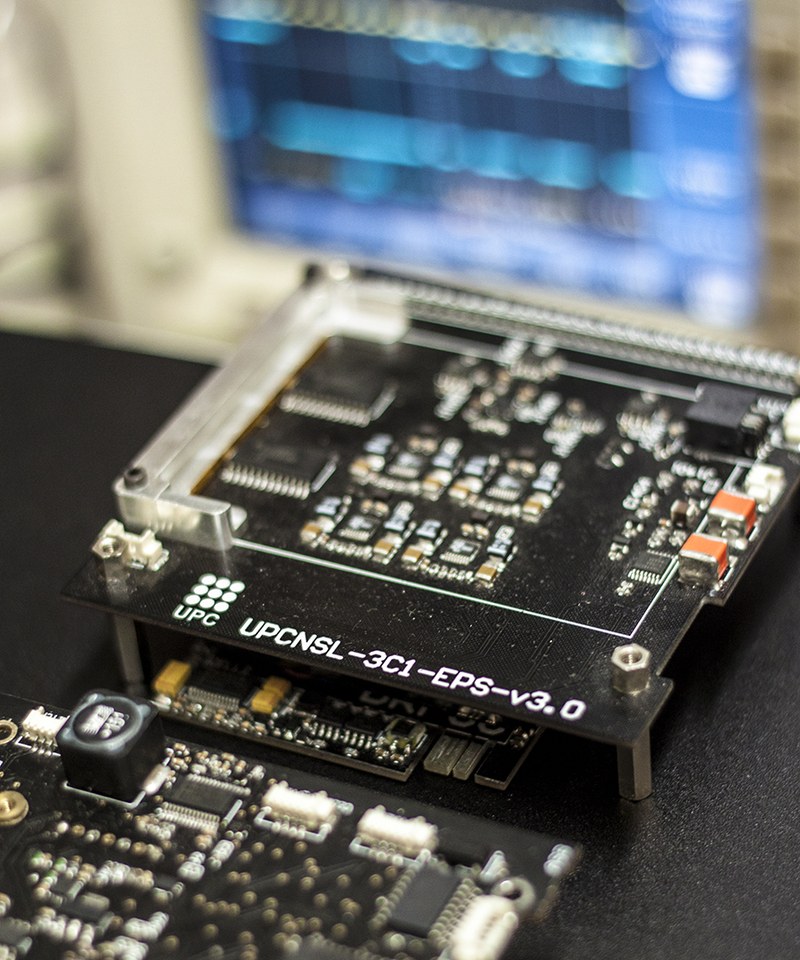Recharging the batteries of the ³Cat-1
Aug 30, 2016
Yesterday, Monday 29th, two of our NanoSat Lab members were headed to the Netherlands once again. Their goal: to recharge the ³Cat-1's batteries.
With its launch window planned for this summer and the ³Cat-1 integrated in its Quadpack deployer in May, the spacecraft was waiting in the Netherlands for its final launch date to be announced. Unfortunately, our Dutch launch services provider, ISILaunch, contacted us in June to notify us that the SpaceX's Falcon 9 that would carry our spacecraft from Vandenberg Air Force Base to its LEO orbit, had been delayed for unknown reasons.
Given the unexpected delay, the ³Cat-1 team was called to estimate whether the battery pack integrated in the spacecraft would maintain a safe charge level during this overly extended period. With its two lithium-ion cells adding up a capacity of 1150 mAh, the battery pack also integrates energy managing and protection circuitry that monitors the state of the batteries, steers the power flux and balances the charge of the cells. As a result, the battery cells have a moderately small but non-negligible leakage. Because of that, the EPS experts recommended to perform a battery recharge, provided that the satellite launch would be delayed at least a few months.
Equipped with a portable power supply, several tools and a couple of debug cables, our lab members Pol Via and Carles Araguz have flown to ISIS-ISILaunch premises in Delft, determined to enter their clean-room and access the ³Cat-1's charging port. Once in the clean-room, and in company of the Quadpack-neighbour teams (skCUBE and ROBUSTA-1B), all teams proceeded to de-integrate their 1U spacecraft from the canister, putting their RBF's back. Our engineers measured the state of the batteries and concluded that the ³Cat-1 required a replacement of the whole battery pack. This allowed to insert a fully-charged and brand new set of battery cells, but involved several hardware and software procedures. Once the new battery pack was replaced and the satellite had passed its sanity checks, the three CubeSat's were put back to the Quadpack deployer slot.
With the launch date now planned for late October, what remains now is to hope that SpaceX doesn't delay it once again, and to wait until we see the ³Cat-1 from the distance of its LEO orbit.
You can read more about the ISILaunch09 campaign in their blog.

Share: